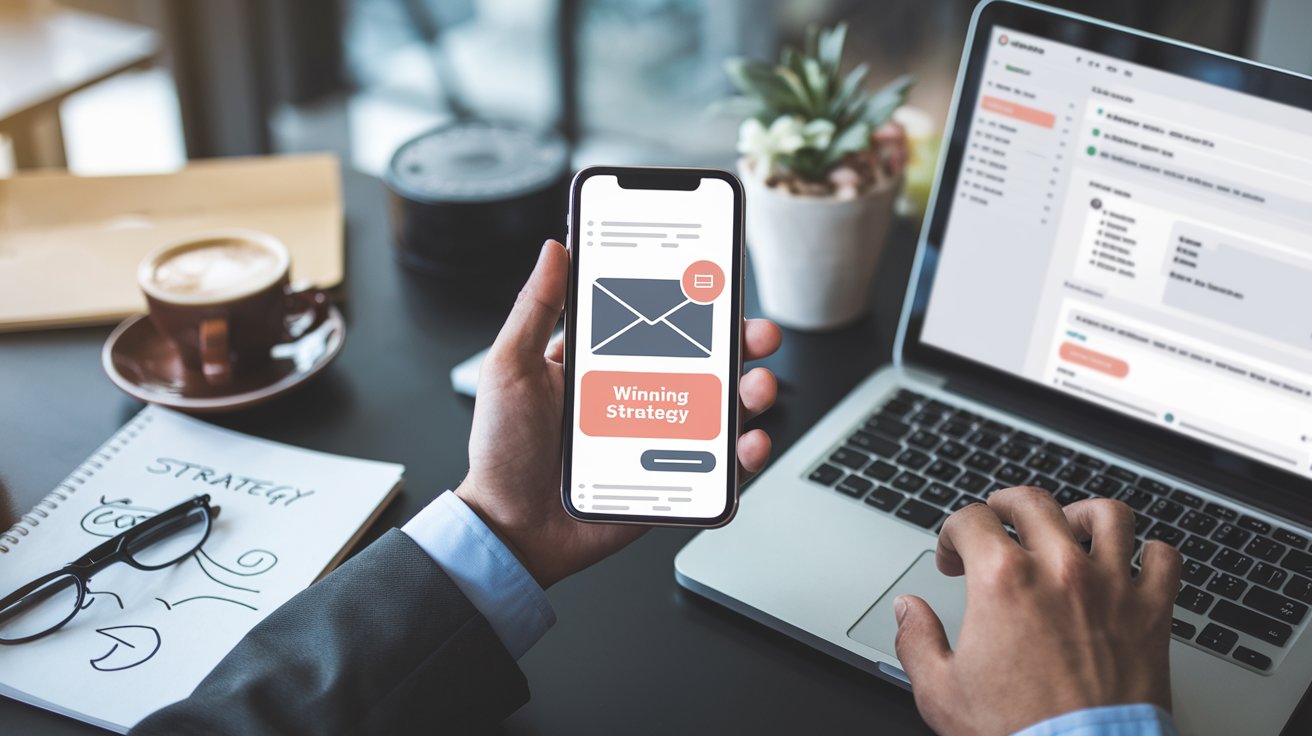Introduction
Email marketing remains a pivotal tool for B2B marketers because it gives a direct and personal channel to engage with clients and prospects. It is also the preferred communication channel with 77% of B2B buyers saying their preferred form of contact is email. Email marketing allows you to deliver targeted messages right into the inbox of decision-makers, providing a unique opportunity to build relationships and drive conversions. Unlike other marketing channels that may lack a personal touch, email allows for precise targeting and consistent communication. However, the key to a winning email marketing campaign is unlocked only through a well-structured strategy. A haphazard approach can lead to missed opportunities, diminished engagement, and ineffective use of resources. This guide will help you build and structure an email campaign that aligns with business goals, resonates with the target audience, and drives measurable results.
1. Understanding the B2B Audience
To craft an effective B2B email marketing strategy, it’s crucial to understand the audience you’re targeting. Market segmentation and evaluation play a significant role here. Segmenting the market isn’t just about dividing your prospects based on various criteria such as industry, company size, and role within the company, it’s about understanding the unique situation, needs and challenges this segment faces. This segmentation allows you to tailor and personalise your messaging. For instance, a software provider might target segments based on industry-specific pain points, offering customized solutions that resonate more deeply with each group.
Identifying and defining buyer personas is equally essential. These personas represent the different types of individuals who influence or make purchasing decisions within your target companies. By understanding their roles, responsibilities, and challenges, you can craft emails that speak directly to their needs. For example, a buyer persona for a cybersecurity firm might include IT managers concerned with data protection and compliance. Tailoring your email content to address these specific concerns can significantly enhance engagement and effectiveness.
2. Setting Strategic Objectives
A successful B2B email marketing strategy starts with setting clear, strategic objectives. Aligning your email marketing efforts with your overall marketing strategy ensures that every email you send serves a purpose. Whether your goal is to generate leads, nurture existing relationships, test new sales offers or promote new products/services, your email content should reflect these objectives. For instance, if your goal is lead generation, you should consider where in the sales funnel your prospect is, whether they’re aware of your brand and what the call to action (CTA) will be. Are your emails offering valuable resources, driving them to a landing page or aiming to get them on a call with your sales team?
Key Performance Indicators (KPIs) are crucial for measuring the success of your email campaigns. These metrics provide insight into how well your strategy is performing and where adjustments might be needed. Common KPIs include open rates, click-through rates, conversion rates, and overall ROI. By regularly monitoring these metrics, you can gauge the effectiveness of your campaigns and make data-driven decisions to refine your strategy.
3. Crafting High-Impact Content
Crafting high-impact content is at the heart of any successful email marketing campaign. It begins with writing compelling subject lines and preheaders. These elements are the first impression your email makes, and they must capture the recipient’s attention and entice them to open the email. Effective subject lines often incorporate a sense of urgency, relevance, or personalization to stand out in a crowded inbox.
The body content and design of your email are equally important. Best practices include focusing on the recipient’s pain points and presenting your product or service as the solution. How many times have you opened a cold email to find it immediately tries to sell you a product/service that appears to have no relevance to you?
Let’s say you’re targeting a company struggling with inefficient project management, your email might highlight how your software can streamline their processes and enhance their productivity. A well-designed email should address their pain points, be visually appealing, with clear and concise messaging, a compelling call-to-action, and a layout that guides the reader’s eye to the most important information.
Personalization and customization further enhance the effectiveness of your emails. According to Forbes, 80% of people are more likely to make a purchase from a personalized email. Personalization involves addressing the recipient by name and tailoring content based on their specific needs or past interactions. Don’t just include their name and company name, really think about what you know about them and their pain points. Customization takes this a step further by considering the individual’s company or industry. For example, an email to a tech company might include trends, case studies or testimonials relevant to the technology sector, while an email to a retail company could feature success stories from similar businesses.
4. Continuous Optimization and Compliance
Continuous optimization is key to maintaining the effectiveness of your B2B email marketing strategy. A/B testing is a valuable tool for experimenting with different elements of your emails, such as subject lines, calls-to-action, and design layouts. By analysing the results of these tests, you can make informed adjustments to improve performance. Data-driven adjustments ensure that your strategy evolves based on real feedback and trends, leading to better engagement and higher conversion rates.
Compliance with email marketing laws is non-negotiable. Adhering to regulations such as GDPR (General Data Protection Regulation) and CAN-SPAM (Controlling the Assault of Non-Solicited Pornography And Marketing) is essential to avoid legal repercussions and maintain trust with your audience. These regulations state what you can and cannot do when sending marketing emails. Ensuring compliance not only protects your business but also reinforces your commitment to respecting your recipients’ preferences and privacy.
Conclusion
Email marketing remains one of the most powerful tools for B2B engagement, but only with a thoughtful and structured approach. From understanding your audience and setting strategic objectives to crafting high-impact content and ensuring compliance, each element plays a crucial role in achieving success. By focusing on these areas, you can create email campaigns that not only capture attention but also drive meaningful results for your business. Remember, the key to effective email marketing lies in its ability to deliver relevant, personalized messages that resonate with your target audience and support your business goals. If you’re unsure where to start or how to enhance your current approach, we’re here to help. Contact us today for a free consultation on building or refining your email marketing campaign.



